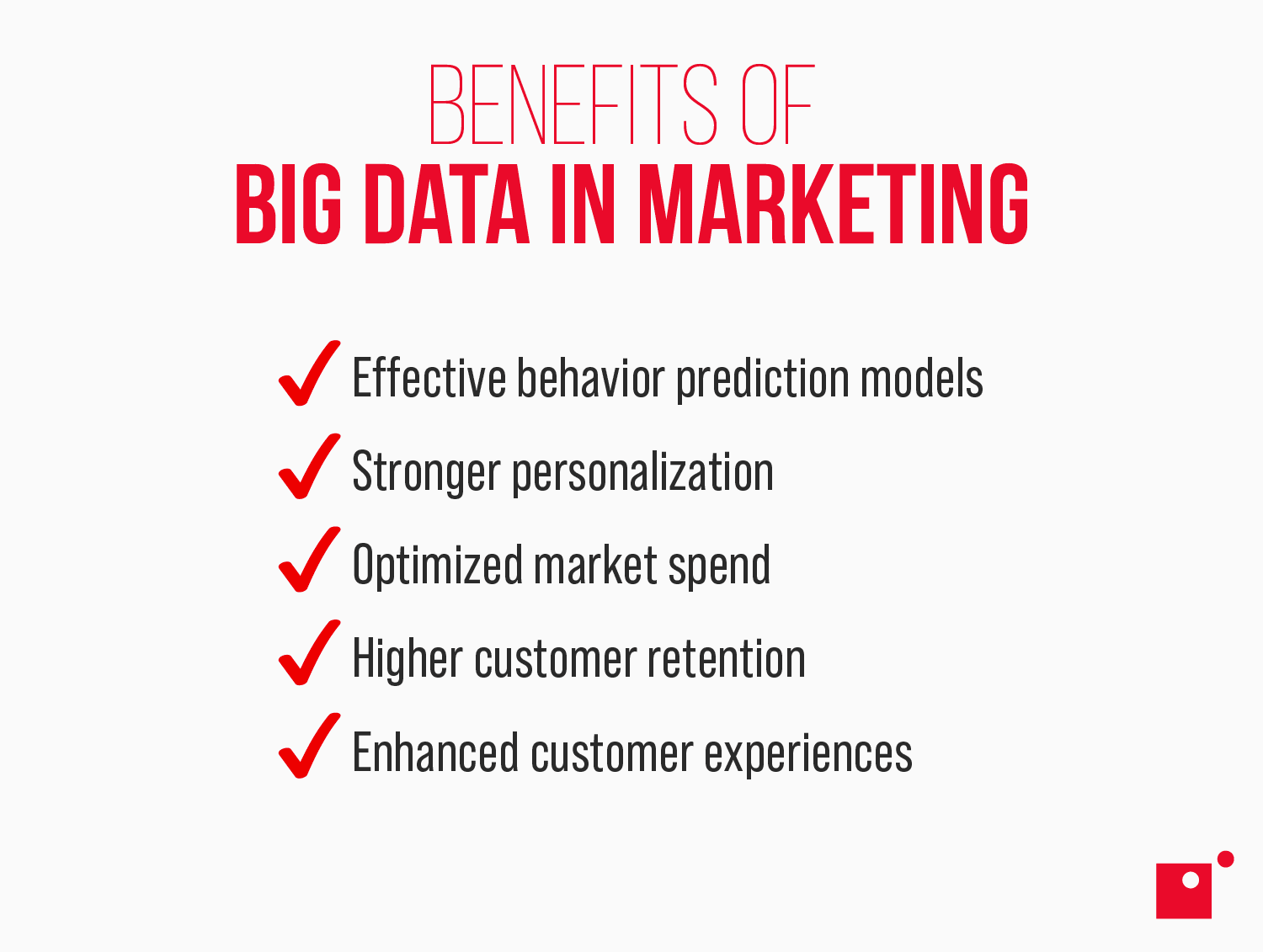Organizations strive to be data-driven, and for good reason. Following the data trail often leads to deeper insights and stronger decision-making. This is where big data comes into play. Big data refers to massive, complex data sets that are too large for typical data processing software. However, the insights derived from big data can be game-changing.
While big data analytics has been a familiar concept in digital transformation for years now, there are still many businesses that simply don’t know how to process, analyze, or make use of big data effectively.
“4 out of 10 companies use big data analytics.”
Adoption of big data analytics is a little behind the curve with only around 40% of businesses making use of the tactic. That said, more and more organizations are looking to seriously revamp their data and analytics budget, with G2 reporting that 9 of 10 companies planned a budget increase in 2023.
Industry leaders can use big data for a variety of purposes such as cost reduction, increasing efficiency across business processes, and the ability to better identify, predict, and meet customer needs.
Throughout the following sections, we’ll look at a few business cases for big data analytics, exploring the various advantages, benefits, and methodologies involved.
Get an idea of how well your business is using the available data by reviewing Impact’s Checklist: What Businesses Need for a Successful Business Intelligence Strategy.
1. Big Data Analytics Examples in IT
Big data analytics can be used for competitive advantage by supporting a robust IT infrastructure, which is vital to enhancing organizational efficiency while also ensuring cost savings and security.
Analytics supports the creation and deployment of a more robust IT infrastructure by giving professionals the tools they need to stay on top of everything. In particular, IT leverages analytics in two primary ways: network performance and cybersecurity.
Network Performance
Analytics shed light on network performance in areas like traffic, connection speeds, uptime and downtime, user habits, and even the printing environment.
Using the data collected from this monitoring, IT professionals can understand the movement of traffic across a network, and managers can tweak processes as needed to encourage efficiency.
This is done by a software engine collecting and analyzing data from a variety of sources, like connected devices, servers, and the network traffic flow. Network analytics also help your IT team spot bottlenecks early, check the health of devices on the network, and fix issues more quickly as they arise.
If your network performance is found to be suboptimal, the information fed to your IT team helps them discover what issues are slowing the network down and how they can be easily remediated.
In other words, the use of network analytics allows you to ensure that your operations are running smoothly at all times, catching network performance issues, and keeping costly downtime to a minimum. This is a good example of big data analytics deployed in a modern organization.
Cybersecurity
Cyberattacks are increasing—some 95% of IT decision makers believe they are susceptible to external threats. Analytics are most frequently deployed to study the behavior of breaches in order to predict the next one.
It has historically been incredibly difficult to predict a cyberattack.
However, according to the International Data Corporation, big data may be just the key that the industry needs in order to provide analysis and give insights on best practices for avoiding attacks.
For example, data analysis can show you when users are most frequently working. With this information, the system can differentiate between normal and abnormal behavior, in turn creating a logic path that determines when an alert needs to be checked. For instance, a login attempt at a strange hour might warrant a deeper investigation to verify and authenticate the request.
This is done by analyzing big data sets, both current and historical, and using machine learning to help the system understand patterns and trends.
The more data your business can analyze and process, the stronger your network defense can be. Through big data analysis, your security solution can build a clear picture of what’s “normal activity” in your network environment—who logs on when, who has access to what information, and typical data handling behavior.
This makes it a lot more difficult for cybercriminals to target businesses that utilize big data analytics, as any deviation from predicted patterns in the business network will be flagged and investigated by IT.
2. Big Data Analytics and Marketing
Analytics first arose in marketing as companies began looking deeper into customer behavior and how consumers responded to various campaigns, value propositions, and product positioning.
Since then, analytics has proven to be a powerful marketing tool in several capacities. For example, big data analytics can be used for a competitive advantage in marketing by:
- Giving companies a better sense of market segments and potential audiences
- Providing more in-depth insight into customer behavior and preferences
- Experimenting with new products and better marketing approaches
- Revealing the best strategies for augmenting the user experience
- Making A/B testing easier
- Assisting with the optimization of pricing strategies
With markets and consumer preferences rapidly changing, it’s critical to be constantly testing new ideas. Analytics makes the entire process easier by providing poignant clues into what works and what doesn’t.
For example, big data analytics can help provide information on what particular customers are most interested in, and that information can then be used to target them with more specificity in your campaigns.
If you receive promotional emails from e-commerce sites, it could very well be the result of big data analytics, business intelligence, and individualized consumer targeting.
